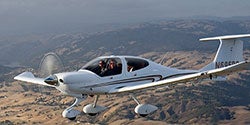The Hottest Four Seaters
A look at new fixed-gear, four-seat singles
| Video by Wilco Films, www.wilcofilms.com Plane & Pilot photographs a Cirrus SR22, Diamond DA40 and Cessna 400 over central California. |
Apples to Oranges? Aircraft comparisons of any kind are one of the most difficult things we do at Plane & Pilot. In the case of the four-seater comparison for our Buyer's Guide issue (Jan/Feb 2009), we wrote that story in September and used the best pricing information available at the time, the then-new winter edition of RVI's Aircraft Bluebook Price Digest, standard pricing guide for the industry. The prices we quoted were for an average equipped airplane. Since the story was prepared, however, Cirrus has installed a full Garmin G1000 in the SR20-G3, and accordingly, they've raised the base price to a higher level. Similarly, we sometimes have problems when we publish performance specs, because in some instances, the basis for a spec may be different with different airplanes. Some manufacturers rate their airplanes for 75 percent while others may approve operation at 80 percent or more. Some cruise specs are expressed at a mid-cruise weight, others are at gross. In instances when the appropriate number wasn't readily available in Aircraft Bluebook, we looked up the appropriate entry in Jane's All-the-World's Aircraft. Our goal is always to make the spec box as fair as possible to all manufacturers. Below are several corrections and additions to the Four-Seat Buyer's Guide: -The Diamond DA40 XLS is the latest model. We incorrectly listed this as the DA40 XL. -A base Cirrus (SR20, with Garmin Perspective) starts at $269,900. Speed: Weight: -A base Cirrus SR20 has a useful load of 970 lbs. Full fuel payload is 634 lbs. |
||||
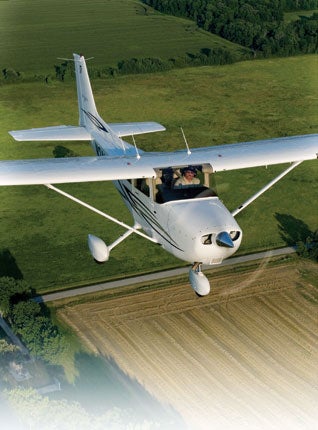 |
| If you're looking to purchase a four-seat single, then you've got no shortage of models to select from. Aside from price range, the models encompass a wide variety of performance capabilities and equipment. 68% of Cessna 172 owners rate their aircraft a perfect 10. |
The Hottest Four Seaters
The four-seat, fixed-gear single market is unquestionably the most popular segment of general aviation. That's perhaps the main reason there are so many of the type available. In fact, there are more than a dozen variations of eight separate models in competition for the four-place dollar.
Which one you choose is dependent upon far more than the size of your bank account. Base prices range from $183,020 for the entry-level Maule MX-7-180 taildragger to $620,000 for the top-of-the-line, turbocharged Cessna 400. Such a tremendous price range suggests a huge difference in capability, basic equipment and performance. The Maule is a truly simple machine, whereas the turbocharged Cessna 400 comes standard with a Garmin G1000/GFC 700 and cruises at nearly double the speed of the basic Maule MX-7.
It's important, however, to consider all the other factors that go into a buying decision. Price and cruise speed aren't the only parameters that buyers consider when evaluating an airplane. Payload, climb rate and resale value are also major concerns, and lately, fuel burn has become an ever more important consideration.
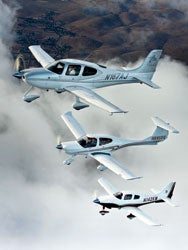 Perhaps the first question is whether you really need four seats. Obviously, many pilots feel they do, or there wouldn't be so many four-place machines available (and no reason to write this article). If your kids have long since moved away, and your partner doesn't like to fly, a two-seater such as a Diamond DA20, Liberty XL2 or an American Champion Super Decathlon could work well, as there are currently no production single-seaters available. The ranks of production, two-seat models are truly limited, perhaps a half-dozen aircraft, so think long and hard about how you'll use your airplane before making a buying decision.
Perhaps the first question is whether you really need four seats. Obviously, many pilots feel they do, or there wouldn't be so many four-place machines available (and no reason to write this article). If your kids have long since moved away, and your partner doesn't like to fly, a two-seater such as a Diamond DA20, Liberty XL2 or an American Champion Super Decathlon could work well, as there are currently no production single-seaters available. The ranks of production, two-seat models are truly limited, perhaps a half-dozen aircraft, so think long and hard about how you'll use your airplane before making a buying decision.
If you fly with two people and plenty of baggage much of the time, however, the short answer may be "yes." No reasonable pilot expects a four-place airplane to carry four full-sized folks and full fuel, and sure enough, only one of the airplanes surveyed does.
I may be typical of four-place aircraft owners: I've flown a four-seat Mooney Executive for the past 21 years, and I carried four people for the first time in a decade last July. I couldn't legally do it with full fuel, so I left the tanks half empty and barely squeaked in under gross.
Is turbocharging for you? If you live on the East Coast or in the Midwest, where field elevations rarely exceed 2,000 feet, turbocharging may be too much of a good thing. Mounting a blower under the bonnet does provide an extra margin of safety at high-density-altitude strips, but it may be a frill you can do without if you rarely fly west, where the sky may start at 12,000 feet. A turbo obviously adds to the price of admission, increases fuel burn, may decrease range and usually raises maintenance costs.
Speed will always be a subjective judgment. Remember that it usually requires a disproportionate investment to fly only a little faster. If you simply must travel at 180 knots rather than 150 knots, you can expect to pay at least 40% to 60% more for the privilege. Most people don't buy airplanes to fly slow, but speed alone is rarely the only goal.
Range is another consideration you should take into account. Analyze your logbook, and see how many long-range trips you've taken in the last five years. If your typical hop is 400 nm or less, virtually any of the four-seat singles will work. It's true that your travel habits may change if you buy an airplane, but past may still be prologue. A long-range aircraft may be in your future if you often fly halfway across the country or do extensive IFR flying (with the additional reserve requirements).
The level of avionics sophistication is a significant X-factor you should consider, though some manufacturers take that question out of your hands by installing practically everything in the basic airplane. Avionics options can boost equipped price by as much as 25% on many new aircraft, and unless you're rated, current and inclined for IFR operations, you may be able to get by with basic NAV/COM/transponder capability.
Similarly, more and more airplanes offer air-conditioning as an option, a feature rarely available until a few years ago. This is another item that deserves a second look. Installing AC typically adds $20,000 to $40,000 to the price tag, and subtracts 60 to 90 pounds from payload, so think twice about opting for it. Remember that you'll typically only need the compressor for the first 15 minutes and last five minutes of most flights. If you operate from Palm Springs, Phoenix or Miami on a regular basis, AC may be a worthwhile investment. Otherwise!
We've surveyed 13 airplanes and hundreds of aircraft owners, and we hope this article helps you make an informed buying decision.
CESSNA SKYHAWK 172SP
The standard Skyhawk is now the 180 hp SP model. Cessna has dropped the old 160 hp version from the lineup. The Skyhawk features a full, two-tube Garmin G1000 and among the most docile handling characteristics in the class. Realistic cruise is about 120 knots, following a 700 fpm climb, but Skyhawks are almost universally regarded as tough little birds. In-flight structural failures are almost unheard of, primarily because the airplanes can't fly fast enough to generate the necessary high G-forces. Landings are easy, and Skyhawks still represent some of the most popular trainers.
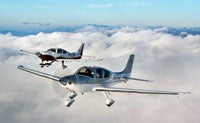 |
| 10% of Cessna 350/400 owners fly their aircraft for business purposes only. 70% of Diamond DA40 owners rate their aircraft a perfect 10. |
| I bought a new Columbia 350 the day Cessna bought the company! The airplane, Cessna and the local Cessna dealer have all exceeded expectations of support and service. It's built tough, with sleek lines, comfort and performance. I love this plane! ---Larry Fenwick, Fort Worth, Texas I own a Cessna 400 with a partner, and it has been a great experience. It has opened up a whole new world to me and my family that didn't exist heretofore. ---Milton Thomas, Summerville, S.C. |
CESSNA 350 | CESSNA 400
When Cessna assumed the assets of Columbia Aircraft last year, it elected to leave the airplanes pretty much as it found them. With their low-wing, carbon-fiber designs, the Columbias were very different from any Cessna we had seen before. Designed as head-to-head competitors with the Cirrus airplanes, the new Cessna models offer configuration and performance that's similar to the popular SR22s. Both the 350 and 400 feature rheostatically controlled air-conditioning as standard equipment, along with the popular Garmin G1000 flat-panel display and GFC 700 autopilot.
 |
| Some people own lake houses or camps; I own a Cirrus SR22. I can go anywhere, anytime. It's the ultimate escape. ---David Ostrowe, Oklahoma City, Okla. |
CIRRUS SR22-G3 | CIRRUS SR22-G3 Turbo
In the last few years, the step-up Cirrus Design airplanes have become the most successful in aviation. In 2007, the Cirrus SR22 outsold even the Cessna Skyhawk, despite a sales price that's nearly $100,000 higher. The SR22 bumps power up to 310 hp, boosting climb to 1,400 fpm and cruise to 185 knots. At economy settings, the standard SR22 can range out more than 1,000 nm. The Turbo model relies on an STC for a blower from George Braly's Tornado Alley Turbos (www.taturbo.com) of Ada, Okla. Cruise is 219 knots at 20,000 feet.
CESSNA SKYLANE 182T | CESSNA SKYLANE T182T
The Skylane, one of everyone's favorite four-seaters, now comes in two flavors: normally aspirated and turbocharged. Both airplanes use essentially the same derated, 540-cubic-inch Lycoming engine, and both offer 140-knot cruise in the bottom 10,000 feet of sky. The turbo model boosts top book cruise (88%) to 159 knots at 12,500 feet, and you can bleed even more out of it at higher altitudes. Perhaps ironically, the Skylanes have gained weight with age, and neither model will carry four big passengers and full fuel, formerly a major claim to fame on the older-generation airplanes. Still, Skylanes continue to rule as one of the world's most popular, uncomplicated four-seaters.
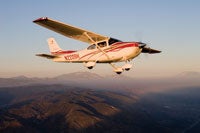 DIAMOND DA40 XLS
DIAMOND DA40 XLS
The Austrian Diamond Star represents Diamond Aircraft's entry into the four-place market, and the offbeat design performs very well for only 180 hp. Performance of the slick, composite airframe is nearly up to basic Sierra and Arrow retractable standards, despite spiffily spatted wheels hanging happily in the wind. The Star also offers something practically no one else has, a left-side back door for rear passenger entrance/egress. Combined with a powerful elevator and light, responsive ailerons, the DA40 is one of the most popular imports to the American market.
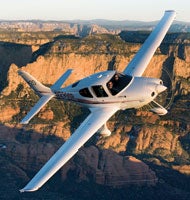 Cirrus SR20
Cirrus SR20
The low-priced model from Cirrus Design features a 200 hp Continental engine and a BRS parachute system. It's a composite design that offers gull-wing doors and a huge cabin designed around the interior of a BMW 5 Series sedan. The SRV is the trainer model of the airplane, and the SR20-GTS is the fully equipped version. Both offer nearly full-fuel, four-seat capability, a 156-knot cruise and a low 54-knot stall.
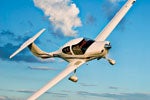 |
| 44% of Diamond DA40 owners fly their airplane for pleasure purposes only. For 88% of Cirrus SR22 owners, their SR22 is the only airplane they own. |
| The DA40 is an outstanding airplane! The G1000/KAP 140 avionics suite is exceptional in IFR conditions and is vastly safer than older avionics configurations. The DA40 burns 8 gph@138 knots! ---Trey West, Wilmington, Del. |
MAULE MX-7-180
There are a myriad of Maules available, all four-seaters, but we'll confine our analysis to the company's entry-level airplane. The MX-7-180 is the traditional tailwheel airplane, featuring 180 hp on the nose. All the Maules feature the Piper Cub airfoil and a modified USA35b, and the result is a short-field performance hardly anyone can match. Maules of any power or configuration offer a practically nonexistent stall, the better to fit into short, unimproved strips. [See "Adventure Aircraft: Off The Beaten Path" for more on this versatile airplane.]
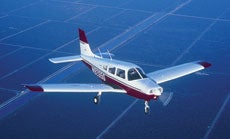 |
| My PA28 has been reliable and inexpensive to own. I have had total satisfaction. ---Mark Davis, Ukiah, Calif. |
PIPER WARRIOR
Now that Piper has a jet under development, the fate of the entry-level models is a question mark. For the time being, however, the airplanes continue in limited production. The 160 hp Warrior is a descendent of the old Cherokee 140, replete with a semitapered wing and avionics options right up through the G1000. It's a 2+2 airplane, a capable trainer and even a decent family transport (for small families), but don't plan on cruising above 120 knots or operating out of Denver or Albuquerque in the summer.
 |
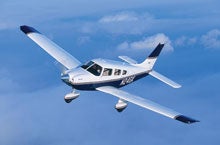 |
| 20% of Cessna 172 owners own three or more airplanes. For 70% of Cessna 172 owners, their Skyhawk is the first airplane they've owned. |
PIPER ARCHER
The PA28-180 has always been regarded as the company's true entry-level four-seater. We're not sure how it manages another 18 knots of cruise on only 20 additional horsepower, but it's certainly one of the most docile and forgiving models on our list, not to mention one of the oldest. With a stall speed well below 50 knots, it's hard to make a bad landing in an Archer. For low-wing fans, the Archer is Piper's Skyhawk---only the PA28-181 is $50,000 cheaper.
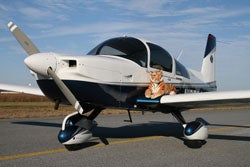 TRUE FLIGHT TIGER
TRUE FLIGHT TIGER
They're baaaaaack. Roy LoPresti's Tiger was such a great airplane when it was a Grumman American that it keeps resurfacing under new management. For the fourth time around, a Valdosta, Ga., company is championing the new-generation Tiger, complete with a sliding canopy, sporty handling, a 180 hp engine and a 140-knot cruise speed. At this writing, the price hasn't been announced, but True Flight hopes to have the airplane back in production by the end of the year. The airplane also may be produced and sold in China, where it's already certified.
| IF YOU COULD CHANGE ONE THING ABOUT YOUR AIRPLANE, WHAT WOULD IT BE? | 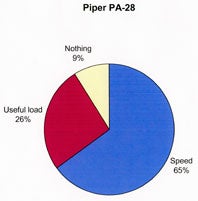 | 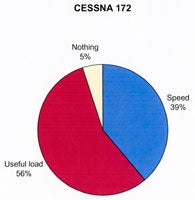 |
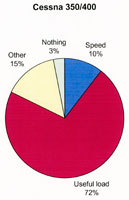 | 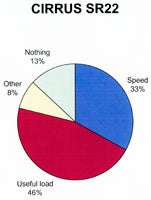 | 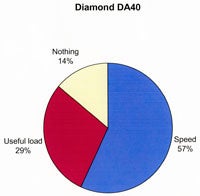 |
| AIRCRAFT OWNER COMPARISON We surveyed aircraft owners to break down demographics by aircraft type. Figures are averages based on survey responses |
|||||
| AIRCRAFT Owned |
Age (yrs.) | Income | Total Hours Flown | Total Hours Flown Last Year |
Typical Flight Distance From Home Base (nm) |
| Cessna 172 | 51 | $288,158 | 831 | 148 | 143 |
| Cessna 350/400 | 54 | $586,607 | 1,064 | 154 | 303 |
| Cirrus SR22 | 50 | $556,522 | 905 | 148 | 312 |
| Diamond DA40 | 50 | $386,363 | 636 | 130 | 246 |
| Piper PA28 | 56 | $221,429 | 1,125 | 98 | 171 |
| AIRCRAFT EXPENSE Figures are averages based on survey responses. |
|||
| AIRCRAFT Owned |
Hangar Rental (per month) |
Tiedown Fee (per month) |
Annual Inspection (per year) |
| Cessna 172 | $370 | $122 | $1,411 |
| Cessna 350/400 | $346 | $175 | $2,492 |
| Cirrus SR22 | $386 | $100 | $2,076 |
| Diamond DA40 | $356 | $120 | $1,784 |
| Piper PA28 | $265 | $106 | $1,552 |

Subscribe to Our Newsletter
Get the latest Plane & Pilot Magazine stories delivered directly to your inbox

